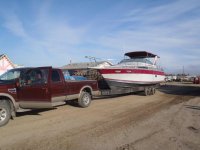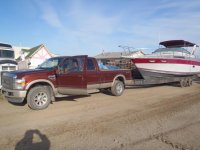When I worked for Hobart Brothers (Filler Metal Division) years ago, I was certified in stick, tig, mig, and sub-arc welding. I worked in the R&D lab as a test welder. Most of my welding jobs were "Audit" welding for General Dynamics (Lima Tank) and Newport News (Shipyard). I had to weld up a pair of 3/4" thick x 14" long steel plates (A36, AH36 and E series steels) and these plates had to pass X-ray first, then they were machined for Sharpy V-Notch impact tests, and tensile tests.
X-ray was toughest to pass on 7018 AC rods. We were allowed only 3 specs of porosity in the entire 14" weldment. Spots could not be larger than 1/8" in diameter. The easiest ones were the 7018DC McKay electrodes in 1/8". 60xx series rods in AC were the easiest for me for out-of-position.
Most of the time the 7018 series rods wouldn't reach failure on the tensile test until about 78,000 PSI. V-Notch impact tests were performed after a bath in liquid Nitrogen and they always passed specs....never had one fail that I can recall.
Obviously the wires both flux and gas shielded were easier than stick electrodes, to weld with and pass the x-ray tests. Your starts and stops have to be ground out in the weldment to pass x-ray most of the time.
If you failed a plate on x-ray, you had to weld 2 more and submit both for x-ray. If either one of those failed, you had to weld and pass 4 plates.
X-ray was toughest to pass on 7018 AC rods. We were allowed only 3 specs of porosity in the entire 14" weldment. Spots could not be larger than 1/8" in diameter. The easiest ones were the 7018DC McKay electrodes in 1/8". 60xx series rods in AC were the easiest for me for out-of-position.
Most of the time the 7018 series rods wouldn't reach failure on the tensile test until about 78,000 PSI. V-Notch impact tests were performed after a bath in liquid Nitrogen and they always passed specs....never had one fail that I can recall.
Obviously the wires both flux and gas shielded were easier than stick electrodes, to weld with and pass the x-ray tests. Your starts and stops have to be ground out in the weldment to pass x-ray most of the time.
If you failed a plate on x-ray, you had to weld 2 more and submit both for x-ray. If either one of those failed, you had to weld and pass 4 plates.


